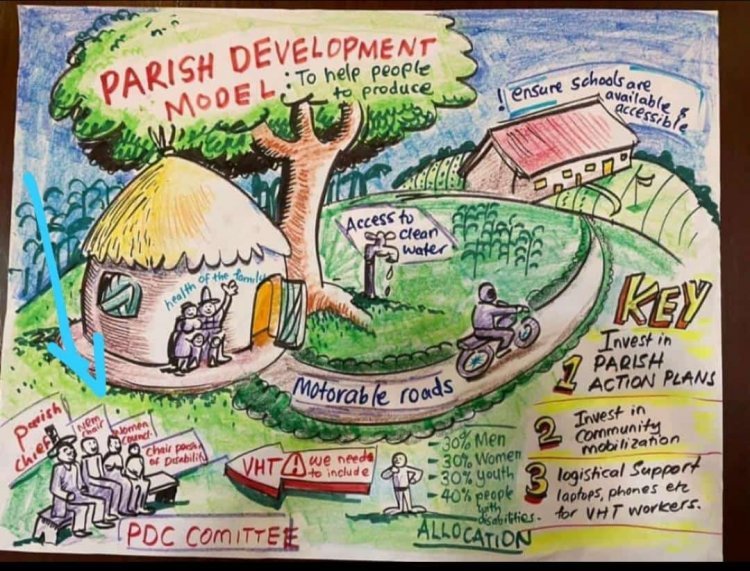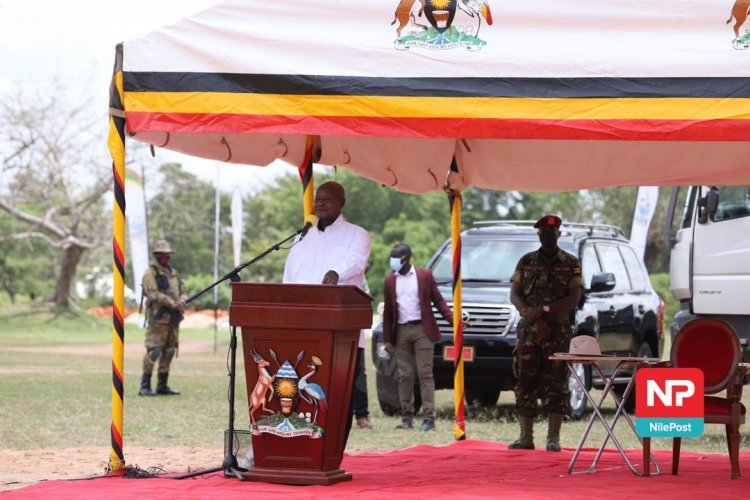The success of Parish Development Model is ‘Decentralization’, but will the usual ‘thieves’ back off!
The Parish Chief should be the accounting officer and should be in charge of ensuring there is proper management of funds by the beneficiaries and funds are used for the planned activities.


Many prefer to say, if all government poverty alleviation programs have failed, what’s so special about the Parish Development Model (PDM)?
Indeed, there is something special about this parish model which is in its name ‘Parish’
The presidential initiatives on poverty alleviation haven’t failed but rather not created the projected impact on the subsistence sector. And we must appreciate the fact that government hasn’t given up on the fight against poverty, but rather picked up the pieces and started over again, just like an NRA soldier with 27 guns!
Talking the Parish Development model, the magic in the success of this initiative is the ‘Decentralization’ to parish level.
The Parish being the government’s planning unit, should be reason enough to give it the mandate to manage not only the initiative but the funds , it’s easy for parish chiefs and the parish councils to monitor such funds and implementation progress in such a small geographical area as compared to the Ministry of Gender, Labour and Social development sitting in Kampala and managing UWEP and Youth Livelihood Funds.
You will agree with me that most Ugandans in hard to reach areas have little or no knowledge and access to these affirmative action funds, and other presidential initiatives like Operation Wealth Creation and NAADS; some of these programs are decentralized to the district level but with district headquarters located in the CBD, it means for one to benefit there is a cost incurred from transport to meals of the day etc, and not many people living in rural communities have the confidence to walk into the CAO’s office to apply for a fund or inquire about a poverty alleviation project.
Many are at the mercy of politicians and other ‘go getters’ who have in the long run swindled their hard earned money.
With the introduction of the PDM model, all LC 1 chairpersons should be tasked with the mobilization and sensitization roles and accountable to the parish chiefs.
PDM will use funds from Emyooga, OWC, YLP, OWC etc; this calls for the need to create a financial management mechanism that follows the bank of Uganda guidelines. You can’t create a SACCO today and manage billions of money the next day, such a project fails at take off stage!
The Parish Chief should be the accounting officer and should be in charge of ensuring there is proper management of funds by the beneficiaries and funds are used for the planned activities.
The PDM funding strategy is three-way; one is through Capitalization of constituency-based SACCOs under the Presidential Initiative for Wealth Creation and Jobs (EMYOOGA). This may not be a good idea ‘for now’; ‘EMYOOGA’ is currently marred by corruption related scandals in year one of implementation and until this mess is cleaned PDM, should be independent of EMYOOGA.
The other proposed PDM funding strategy is through establishment and capitalization of a Parish Revolving Fund. To me this will be the most effective method for PDM. These funds can be managed through Parish SACCOs, under the supervision of the Parish Chief and Parish council which reports to the Chief administrative officer. This is good decentralization and could ease monitoring and evaluation.
The Parish Development Model goal is socioeconomic transformation for wealth creation and employment generation at the parish level. This goal is only attainable if all the tools required for social economic transformation are availed at parish level, i.e. quality seeds to farmers, training, value addition and market linkages.
There is need to invest in equipping farmers with knowledge and skills on improved harvesting and storage practices, for-example some existing coffee factories are hard to reach, many farmers have resorted to selling off their coffee while in their gardens to earn peanuts.
The PDM pillars highlight value chain development which includes production, Processing and Marketing. This is a good strategy if coupled with Infrastructure development to ease movement of goods to markets.
The 3rd pillar prioritizes Financial Inclusion. While Pillar 7 focuses on mind set change, to me mind set change is the backbone of the success of PDM. There is need for all beneficiaries to understand how PDM is the window to poverty alleviation and a really, really good explanation on how PDM will create the anticipated change
Lastly, the idea of prioritizing commodities that are locally and readily available and have ready market both nationally and international is a good strategy, if a farmer in Bwambara Rukungiri is supported to grow rice on a large scale this means his/her household has food to eat and surplus to sell.

Here the presidential initiative on the four-acre model should be adopted, mixed farming is key for poverty alleviation, maybe a study tour for parish chiefs to the Presidential Demonstration farms will do much in mind set change.
I strongly believe through the PDM, moving 39% of Ugandan households from subsistence economy to non-subsistence economy will see the light of the day.

































